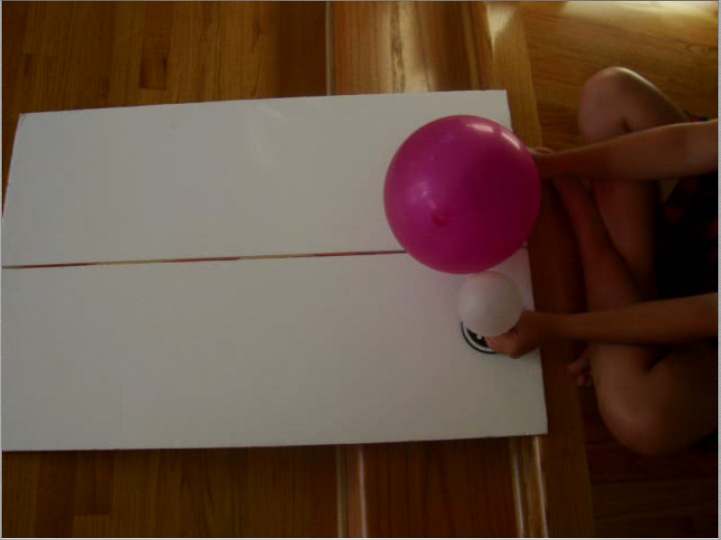The Effect of Forces & Mass on Speed
SED 695B; Fall 2005
Principles illustrated:
• average speed
Newton's Laws of Motion
• inertia
• M=mv
• friction
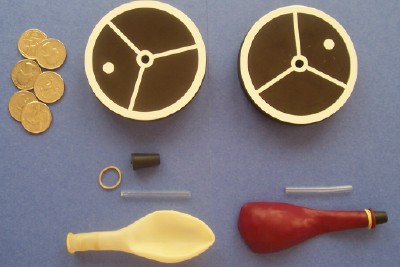
Here are the tools
required
for this activity.
The kit, #12080, was purchased from
the Science Source
at
http://www.thesciencesource.com
Standards addressed:
8th Grade Physical Science
1.The velocity of an object is the rate of change of its position. As
a basis for understanding this concept:
b. Students know that average speed is the total distance traveled divided
by the total time elapsed and that the speed of an object along the path
can vary.
2. Unbalanced forces cause changes in velocity.
e. when the forces on an object are unbalanced, the object will change
is motion.
f. the greater the mass of an object the more force is needed to achieve
the same change in motion.
2. balloons
3. plastic tubes
4. stoppers
5. rubber bands
6. paper plate cut outs
• one large dinner plate with a 22 cm diameter
• one dessert plate with a 14 cm diameter
7. inclined plane (science fair project board)
• To find the average
speed of the balloon-powered disks, divide the total distance
traveled by the total time. v=d/t
• When the disk is placed
on a smooth flat surface, it will float on a thin cushion of air minimizing
any resistance due to friction. (Sir Issac Newton recognized that without
friction an object in motion would continue to move forever.) The balloons
in this activity temporarily remove friction during the race as long as
there is air in the balloons.
• Adding more volume
to one of the balloon disks will provide opportunity
to test
M=mv.
• Exploring the law of inertia on a horizontal surface while the
disks hover show action-reaction. (This activity shows Newton's
3rd Law. For every force there must be an equal and opposite force. As the
air exits the disk, the disk rises up.)
Set Up &
Procedure:
1. Insert a plastic tube into the smaller end of each rubber stopper.
2. Slip the neck of a balloon onto the large end of a rubber stopper.
3. Fasten the balloon to the stopper by wrapping a rubber band around
the neck of the balloon three or four times.
4. Place the free end of the plastic tube through the hole in the top,
middle, and bottom of the disk without protruding holding the disk pieces
together.
5. Select a long aisle or hallway to complete the activity. Make sure
the floor is swept clean.
6. Inflate the balloons using the paper plate cut outs. Pinch the balloon
closed to prevent deflation until ready to release for the race.
7. Line up the disks at the top of the inclined plane. An old science
fair project board is very useful!
8. Use the chart below to complete the activity.

Here are examples
of the paper plate cut outs which can be used to help keep the size
(volume) of the balloons
consistent.
The larger paper
plate's opening is approximately
22 cm in diameter.
The smaller paper
plate's opening is approximately
14 cm in diameter.
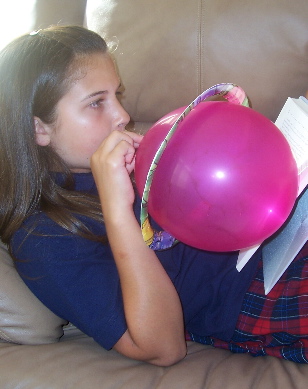
Use the paper plate's opening as a guide to inflate the balloons.
Click
on the photograph on the left to see a
video
demonstration of the activity.
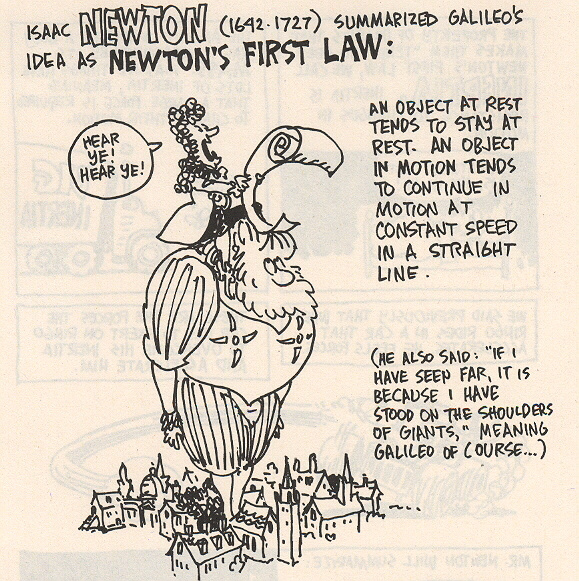
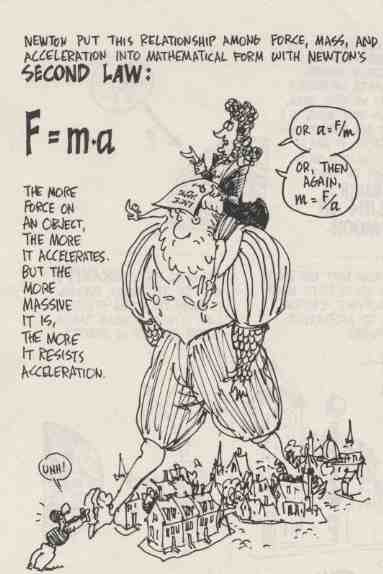
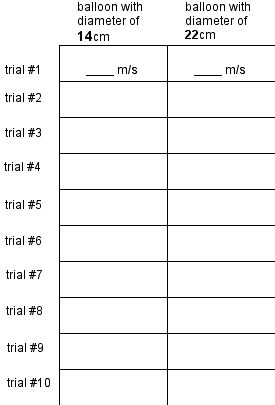
Use this chart to record the average speed of the two balloon disks.
Complete ten trials.
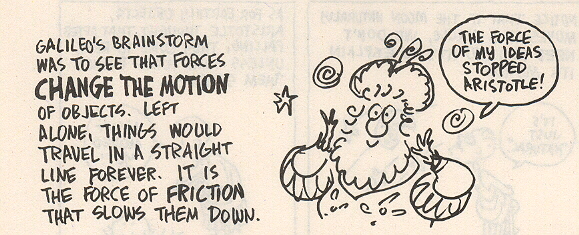
These
three cartoons are from
The Cartoon Guide to Physics
by Larry Gonick and Art Huffman.
References & Links:
http://www.atsweb.neu.edu/physics/ipl/
http://www.lmconsult.com/bounce.html
http://www.nd.edu/~mmcfarla/InstrctnlRsrcs/DemoOutline2005.htm
http://www.exo.net/~pauld/
http://www.doscience.com/act_archive/emuller/
